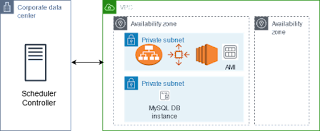Understanding AWS service latency

Understanding service latency is a critical aspect in designing and developing applications on AWS. In this blog we will look at the service latency and service limits of some of the commonly used data collection services in AWS. Latency considerations for "Real time" data collection services: Amazon Kinesis Data Streams and Amazon SQS can be used for real time data collection. It is important to understand the limits of each of these service to determine how they fit in the application architecture. Amazon Data Streams limits – 1 MB/Sec or 1000 Messages/Sec Per Shard for Write. 2 MB/Sec Per Shard for Read for all consumers. 5 API calls /Sec Per Shard for Read for all Consumers. This means Amazon Data Streams have a latency of about 200ms. Go with Amazon Data Streams when you are looking for " real time " data at scale with low latency . However remember that there is no auto scaling of shards in Amazon Kinesis Data Streams. You have to pre-calculate your sha
